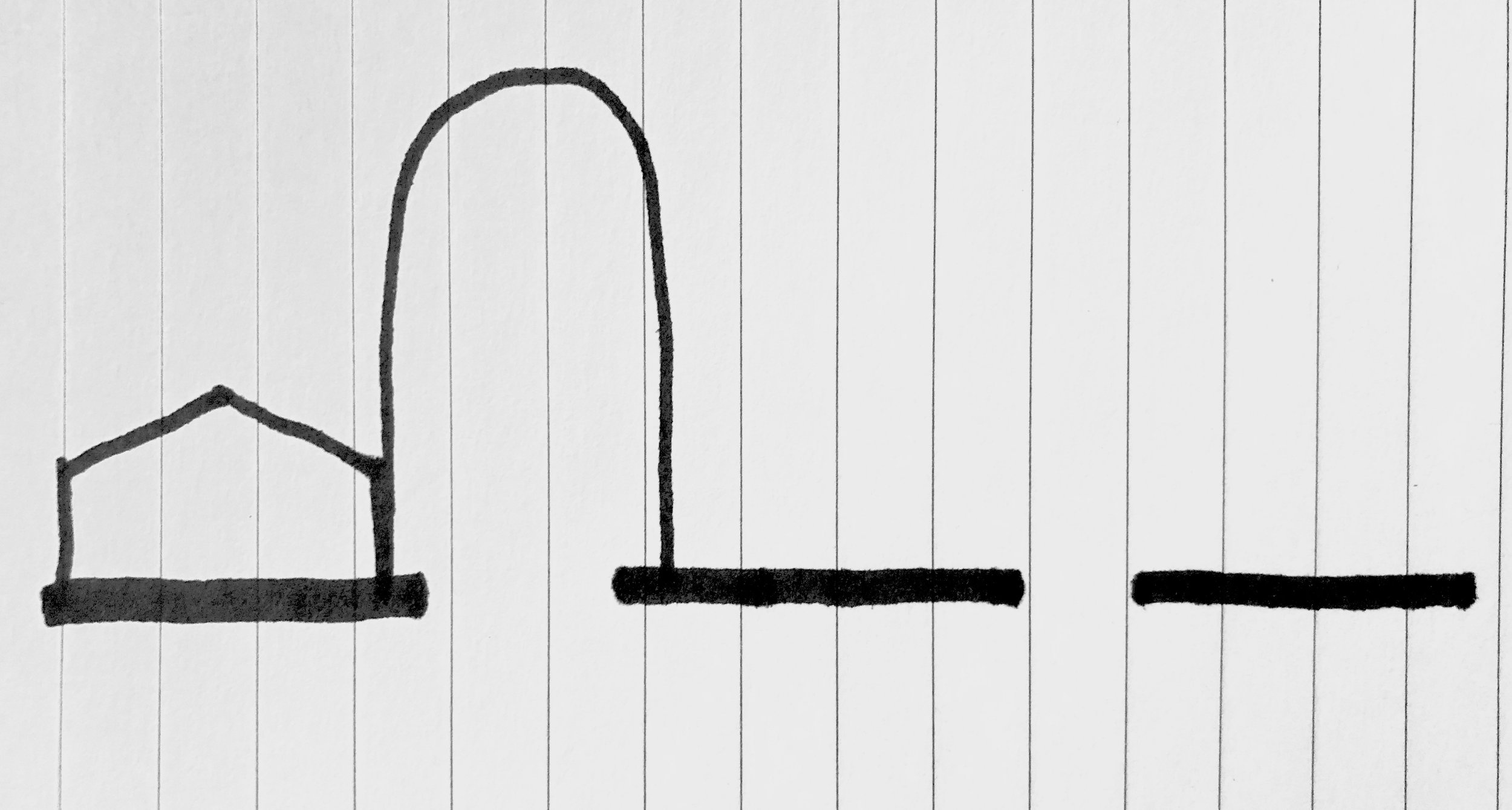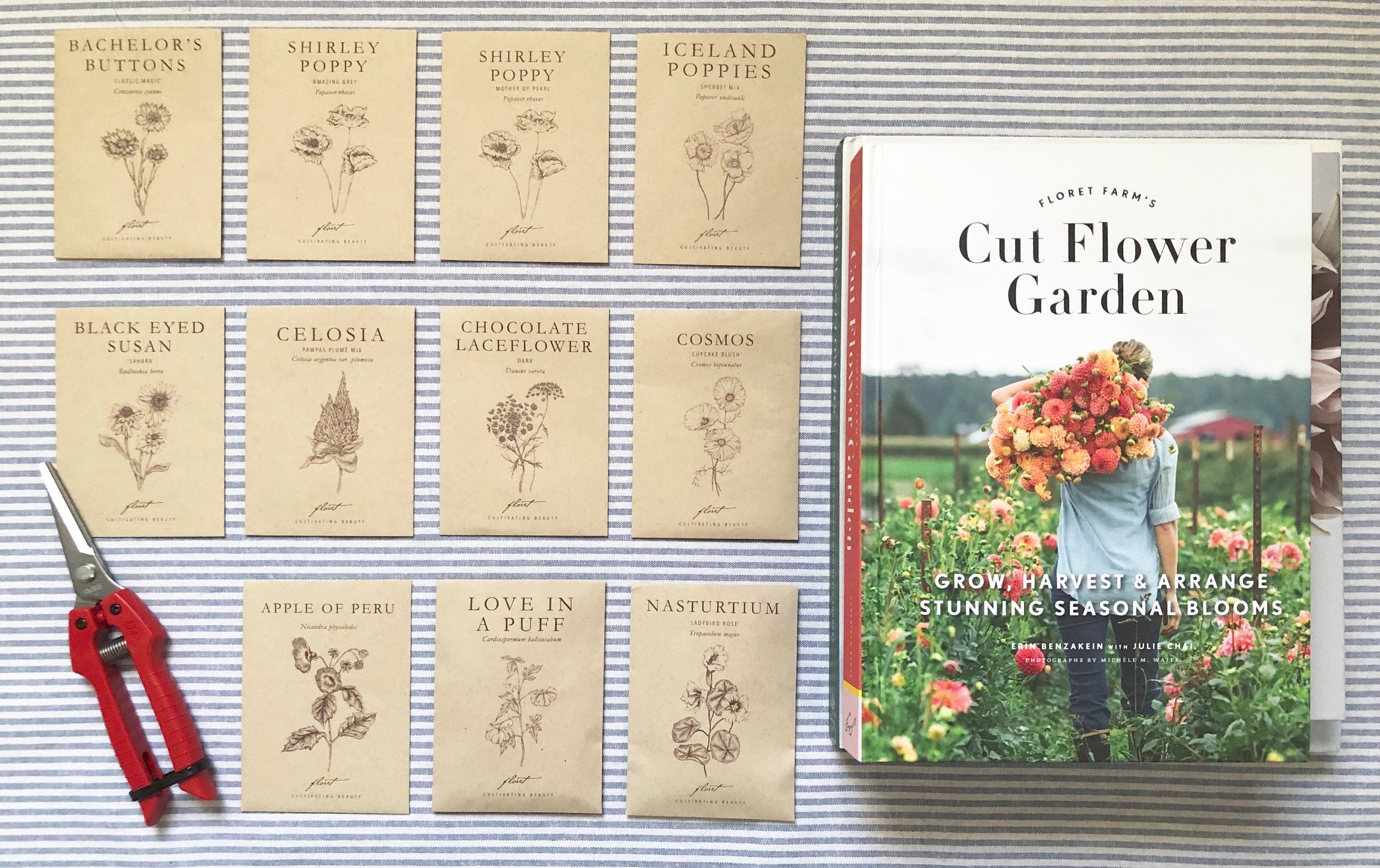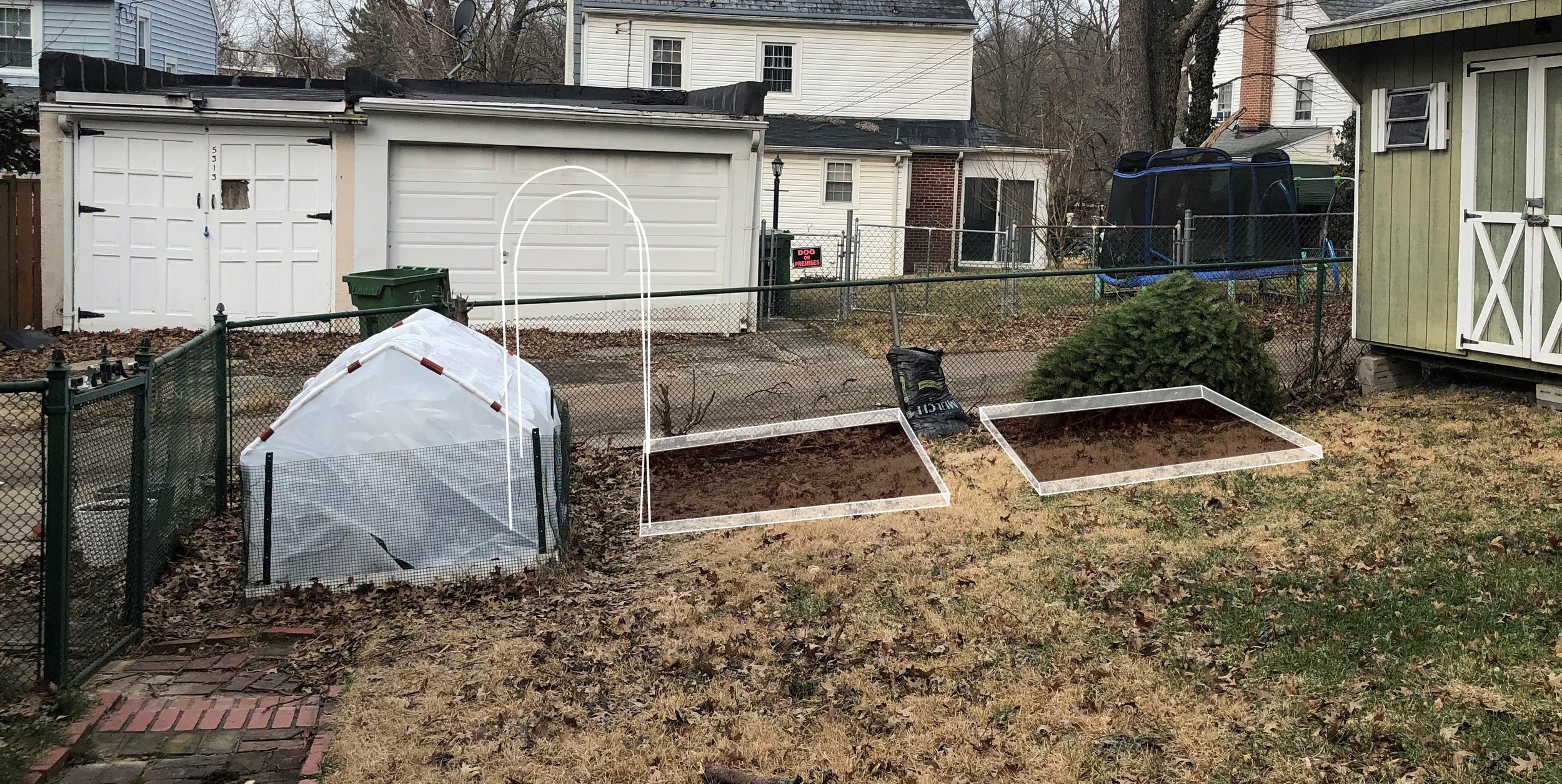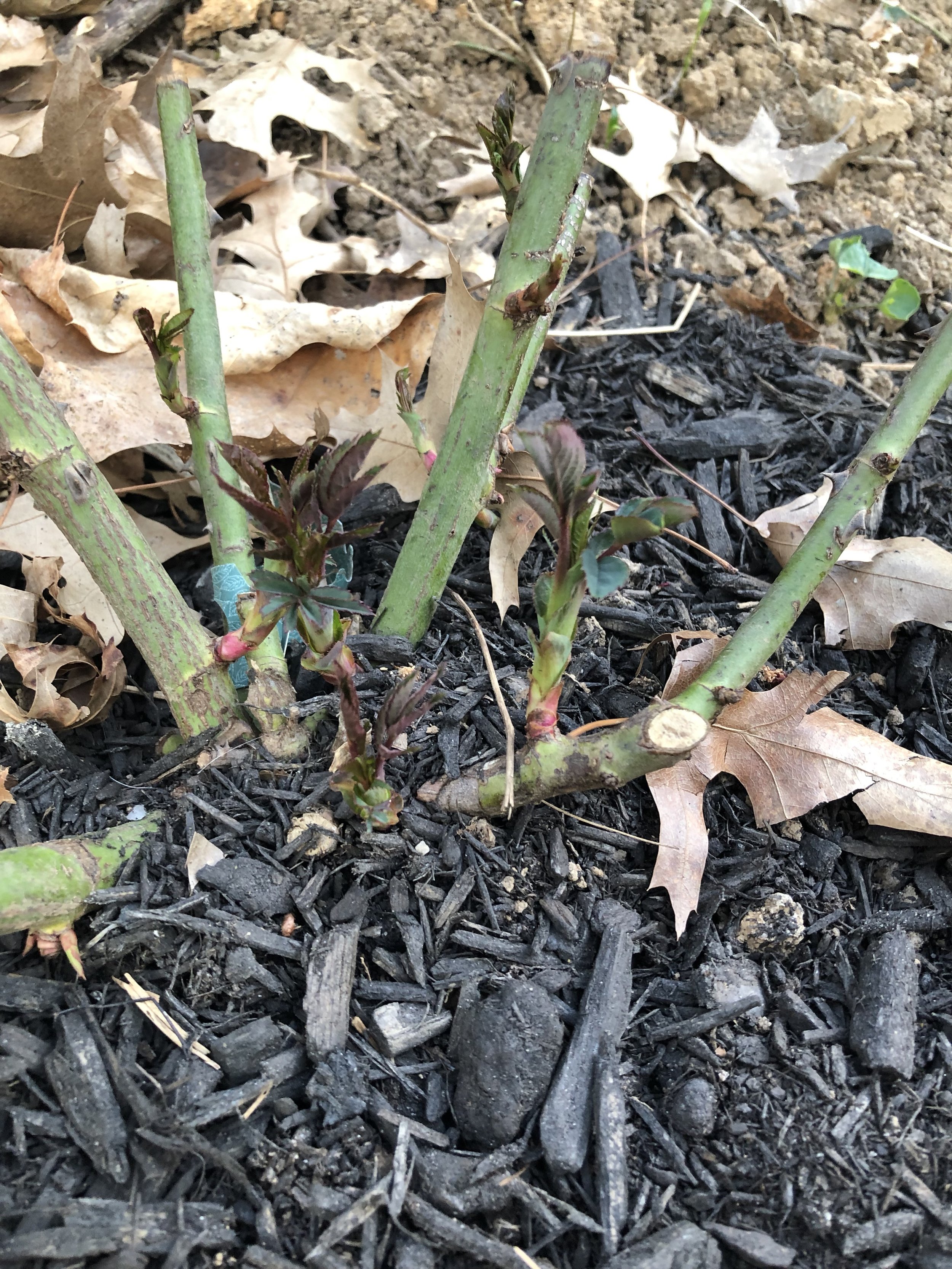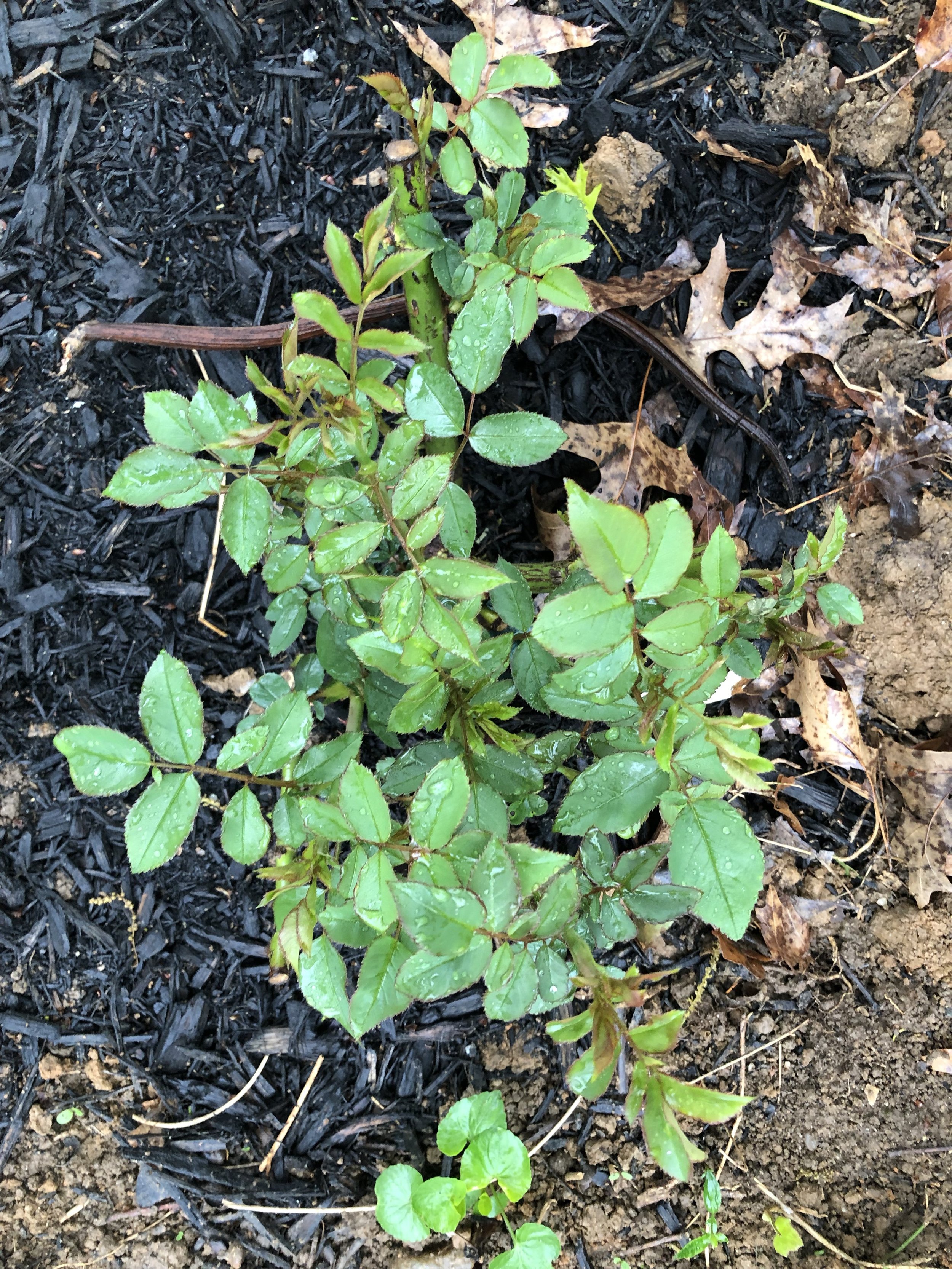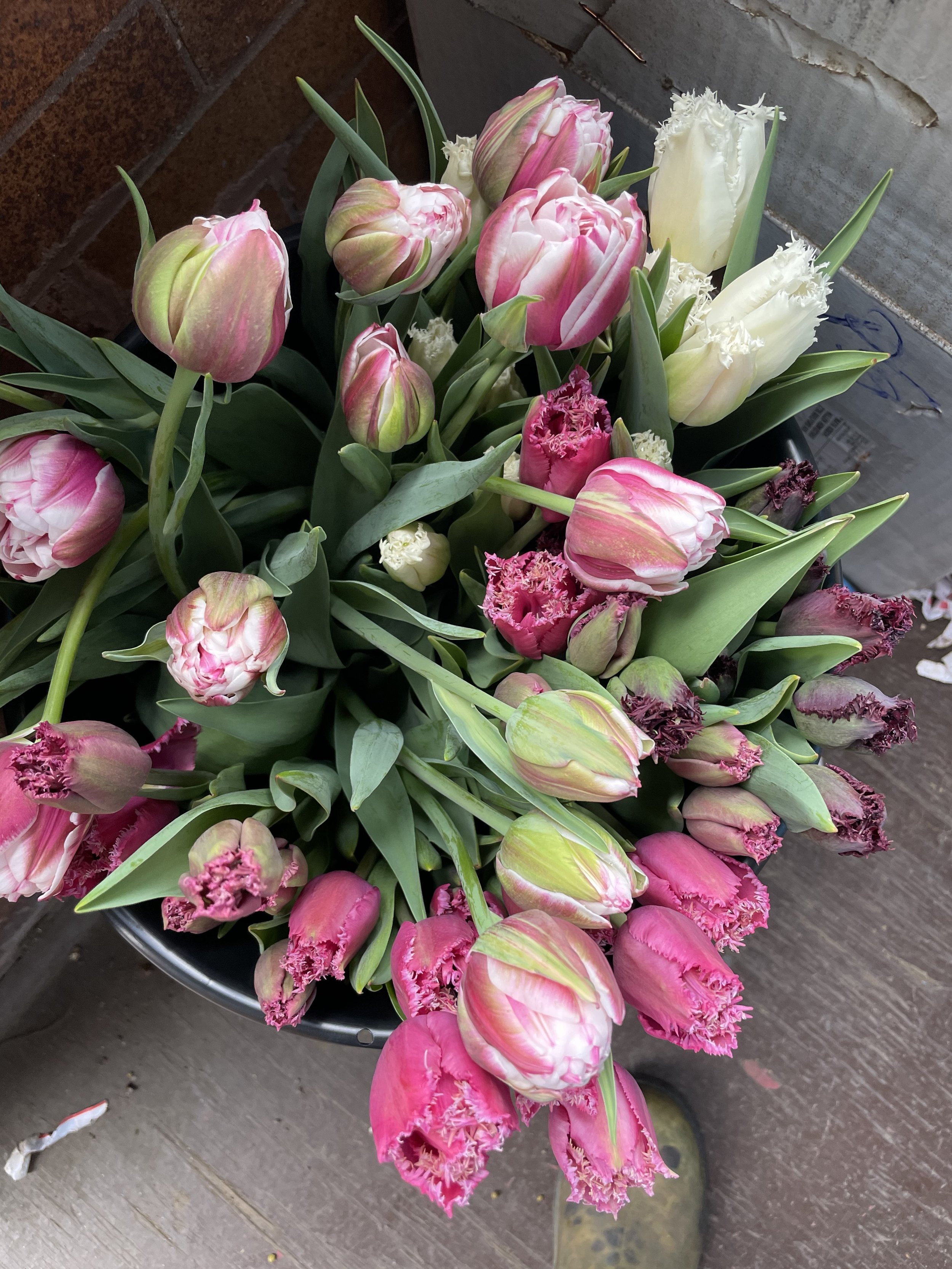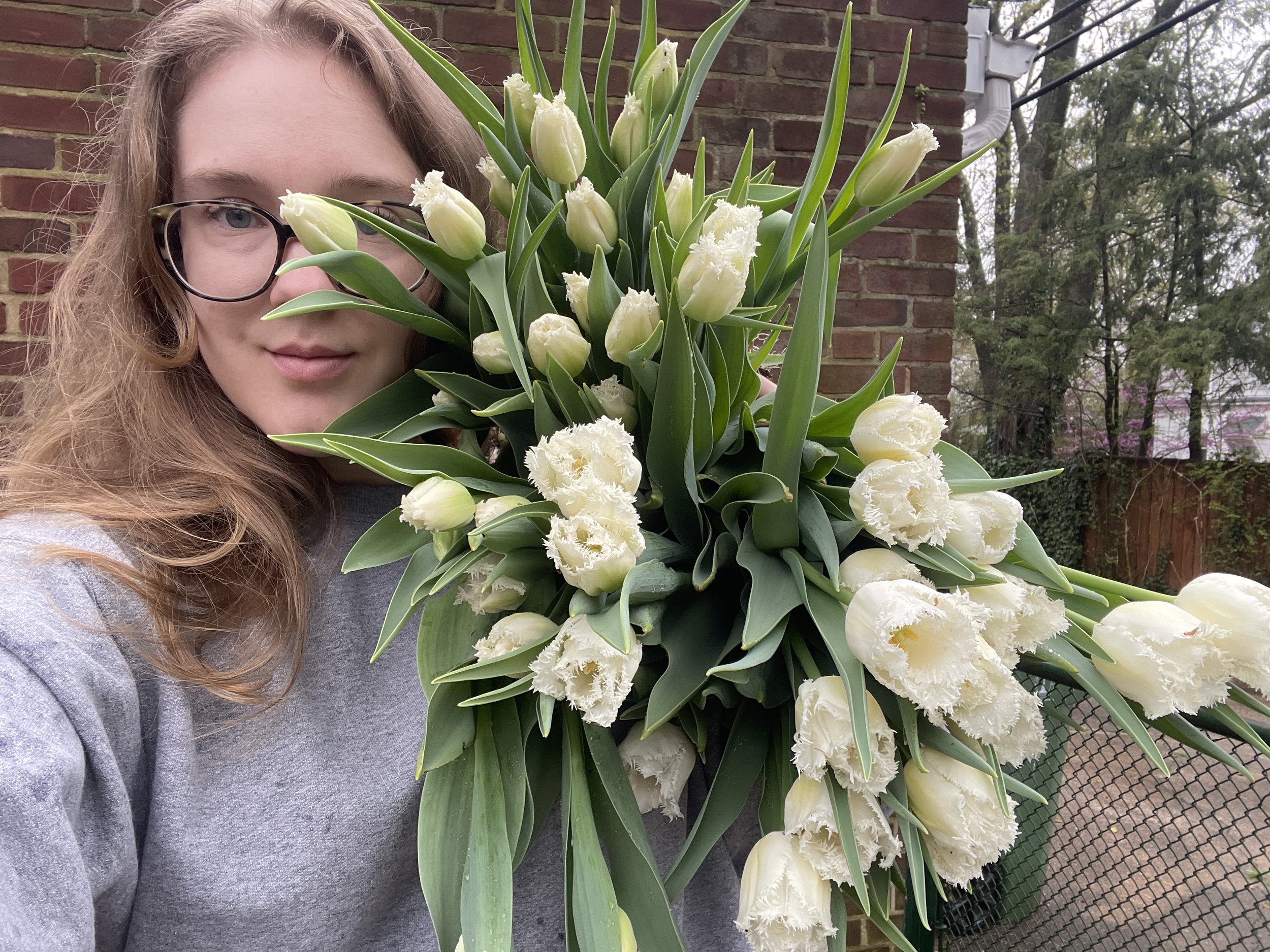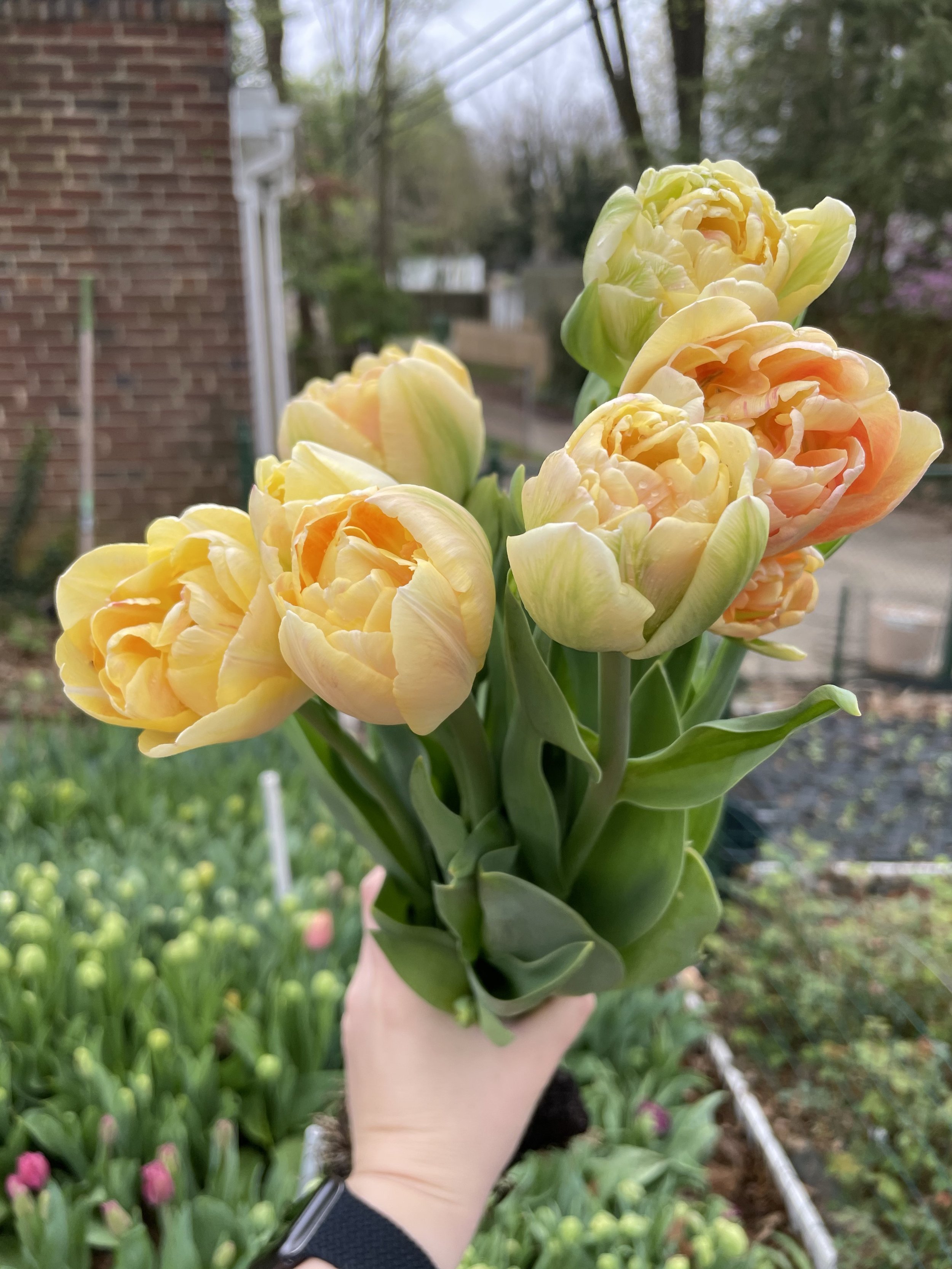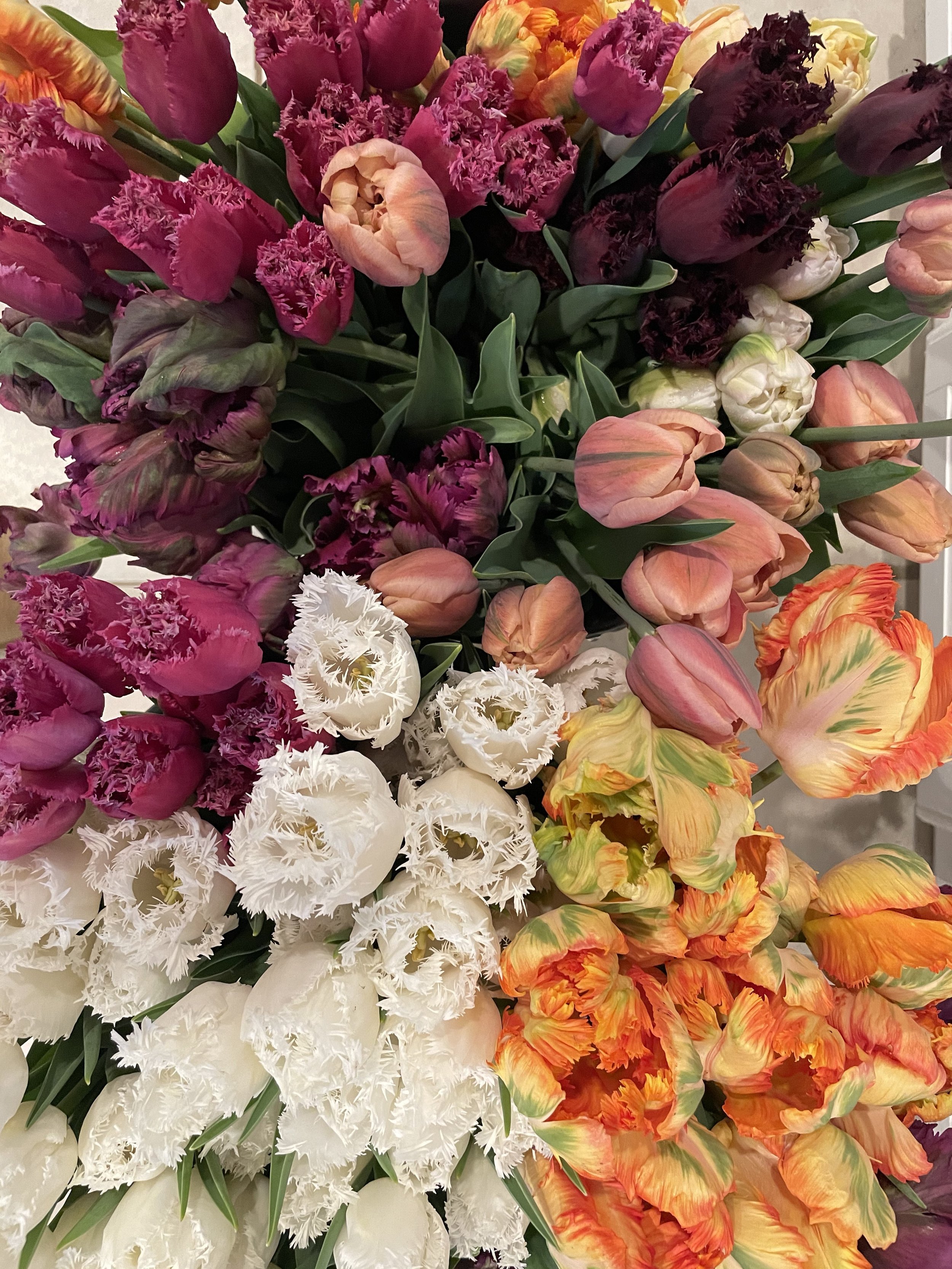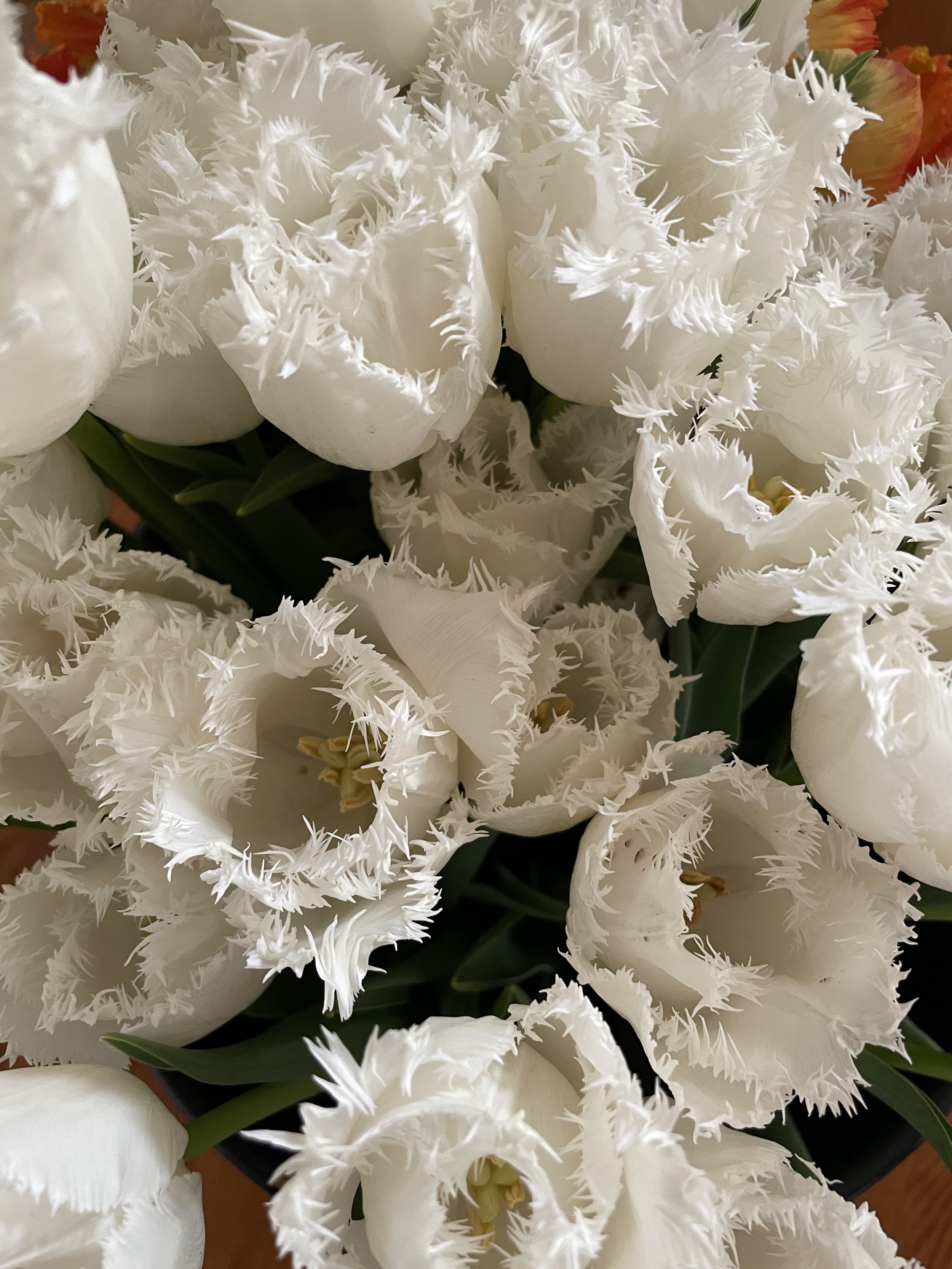Origin Story
All good heroines, and villainesses, have an origin story. Mine tracks right along the lines of dozens of other people who have recently entered the cut flower industry: I found Floret Flower.
I think it was via Pinterest and I’m about 86% sure it was dahlia photos. We had lived in our current house for a two years and I was feeling the spring itch to get into our tiny 4’x8’ raised veggie garden. Jalapeños had been my most successful crop to date. And then I saw IT. THE flower picture that would set me down a winding path towards where I am right now. I wish I remembered exactly which picture it was, but I do remember spending hours on Erin’s website, reading about flower types and varieties, learning about flower farming, seasonality, and every other piece of content I could consume. I had a second tab open on my browser and was rapidly stacking up an Amazon cart of recommended flower and farming books. For those of you who haven’t heard of Erin or Floret Flower, check them out here. They are a great resource for information and products - I still indulge in a few Floret seeds every year to add to my “garden” areas.
A Floret seed haul circa 2019.
All thoughts of a spring vegetable garden went out the window. I went on what can only be described as a bender, buying flower seeds, bulbs and tubers. Sources were scarce since I was buying late in the seed starting season but I managed to scrounge up some things to plant in the spring. Trying ALL the varieties became a passion project (insert meme here). An idea started forming in my mind that maybe, just maybe, I could start a cutting garden that would be able to provide unique blooms to local florists and offset the costs of my newfound passion.
The original vision that became the OG Florxeight logo.
In short, this plan didn’t work out. It was quickly derailed by #architectlife and a jam packed schedule where the precise timing needed to start seeds, grow them out, turn over the beds and get a new crop going was just too much for me. Plus, my offerings weren’t that different from what else florists could get their hands on locally.
Thankfully, my garden gave me the alternative path I needed. I planted my first rose in 2018 from Heirloom Roses and promptly killed it. I have no idea what variety it was, but it was yellow. I waited too long to plant it, planted it in a poor location, and really just didn’t take much care in planting it. Poor guy had no hope. When I entered 2019 with borderline manic passion for growing flowers, I purchased 3 roses (all different varieties) from David Austin Roses. They arrived in March as bare roots, and by the time the first leaves flushed out in May, I was hooked. I felt like such a rock star keeping these plants alive for a few short months that I immediately went and bought 4 more plants to get in the ground that spring.
This is not the direction I would guide anyone down if they came to me for advice currently. But as I rushed over to Local Color Flowers to show Ellen some of my first garden roses, I knew I was on to something special. I had nothing to back it up but a feeling in my gut. I doubled down on ordering rose plants for the next year and banned myself from ordering more seeds. 2020 and 2021 I whittled down on the seed based flowers I was planting, expanded bed space, and planted more roses each year. In 2020 I cut out ranunculus and anemone. 2021 was the last year I harvested tulips.
I made the decision early on in 2021 that 2022 would be the year of roses. I dedicated all my growing space to roses and committed to my largest order ever with a great friend and fellow mid-Atlantic enthusiastic rose grower, David of Rightfield Farm. Since then, Florxeight has been growing only roses and I haven’t looked back. Producing only roses as a cut flower crop aligns with my passions, available time, and limited resources. Its also a new market in my area and I have been able to carve a niche for myself where there is less competition from established cut flower businesses. The future is bright for expanding cut garden rose production in the mid-Atlantic!
Keep growing.
- Lauren
